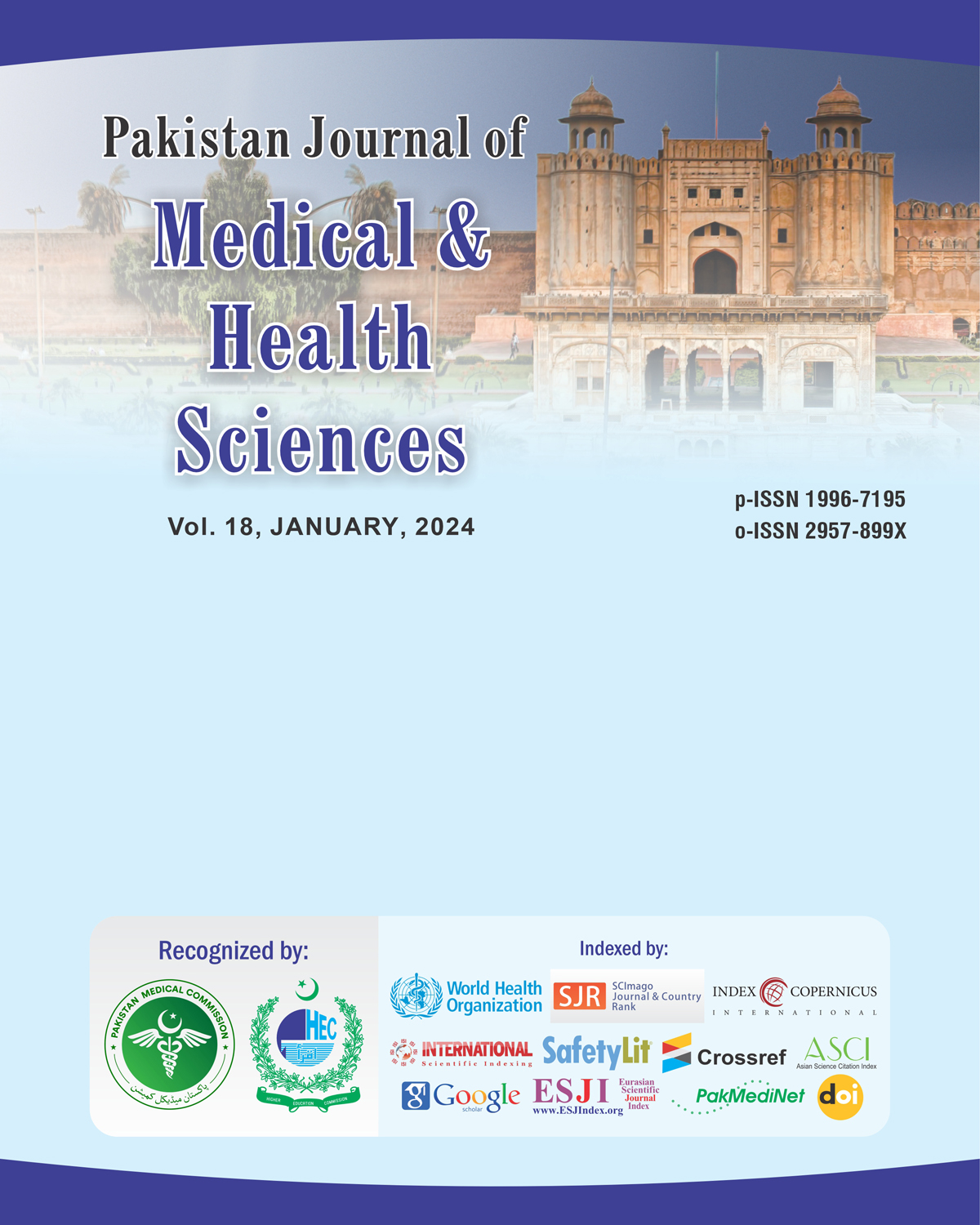Evaluation of Relationship between Neutrophil to Lymphocyte Ratio and Rheumatoid Arthritis Severity
DOI:
https://doi.org/10.53350/pjmhs02024181128Abstract
Background: Persistent inflammation and progressive joint damage characterize autoimmune arthritis (RA), a long-term inflammatory condition
Objective: To assess the association between the neutrophil-lymphocyte index and the severity of autoimmune arthritis, evaluating its potential as a marker of disease activity
Study Design: Cross-sectional observational study.
Study Setting: The study was conducted at Fatima Memorial Hospital, Lahore over 6 months duration.
Methodology: This study included 140 RA patients, all fulfilling the 2010 ACR/EULAR classification criteria. Data on demographics, clinical features, and laboratory results, such as CBC, were recorded. NLR was calculated, and the DAS28 score was used to determine disease severity.
Results: The mean neutrophil to lymphocyte ratio (NLR) among all RA patients was 3.21 ± 1.85, with a significant increase across disease activity groups: 2.14 ± 1.02 in remission, 2.78 ± 1.23 in low, 3.42 ± 1.72 in moderate, and 4.51 ± 1.98 in high disease activity (p < 0.01). NLR was positively correlated with RA severity (r = 0.32, p < 0.01). Additionally, ESR and CRP levels were significantly elevated in patients with higher disease activity, further supporting the relationship between NLR and systemic inflammation.
Conclusion: NLR was found to be a significant biomarker for assessing RA severity. Its simplicity and accessibility make it a useful tool for clinical monitoring subjects diagnosed with RA, though further studies are required to validate its predictive value.
Keywords: Biomarker, Inflammation, Neutrophil to Lymphocyte Ratio, Severity, Rheumatoid Arthritis.
Downloads
How to Cite
Issue
Section
License
Copyright (c) 2024 Shazia Anwar, Adil Khan, Muhammad Ammar Khan, Zafar Abdul Nabi, Salman Khan, Shafi Muhammad Wassan

This work is licensed under a Creative Commons Attribution 4.0 International License.


